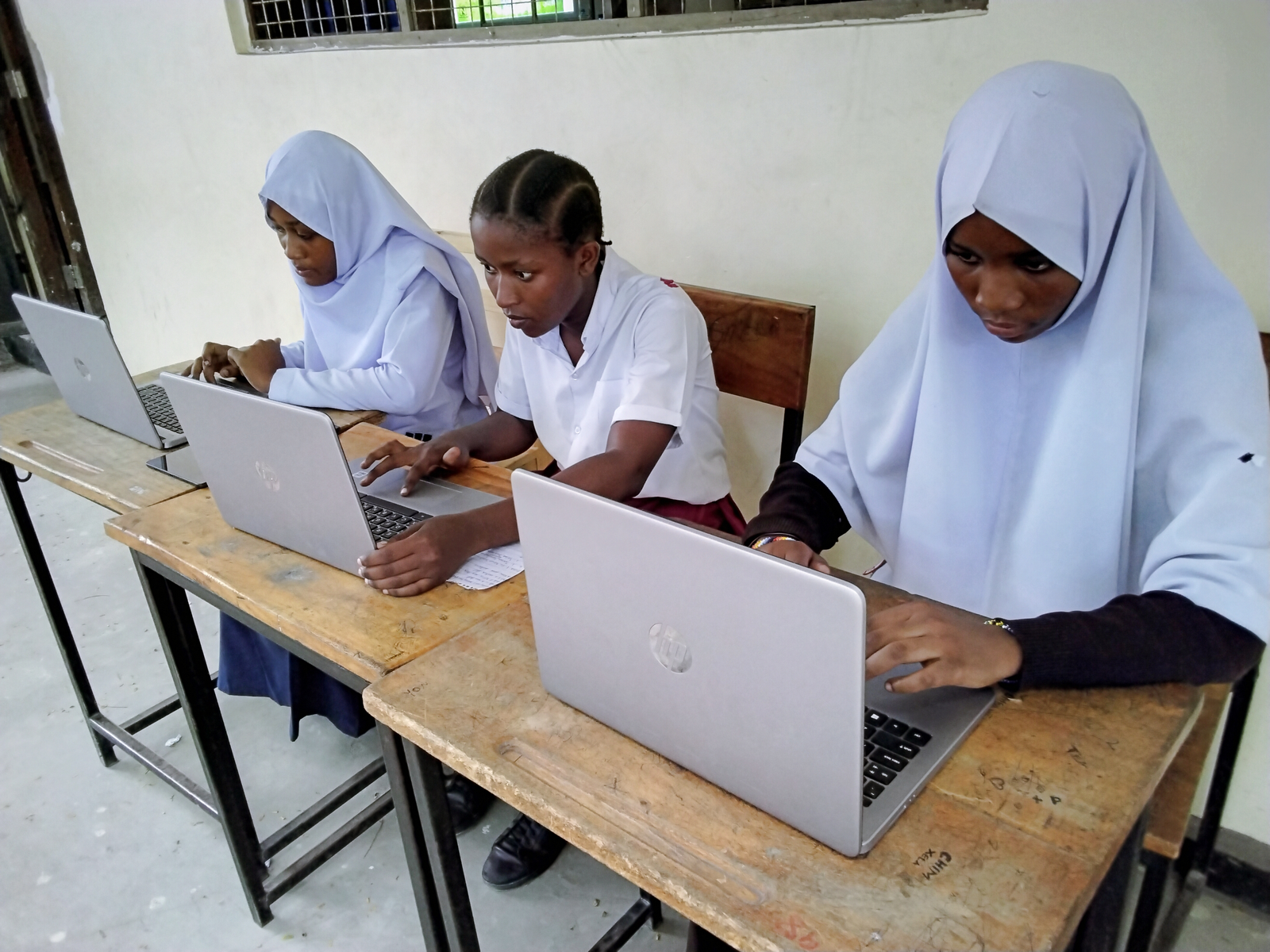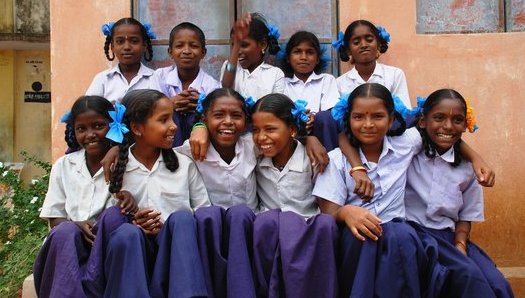
What was achieved in 2015 to help children into school?
Children in conflicts, Education funding, Education in emergencies, Girls' education, Safe schools
It was a year of despair and hope. Twelve months in which the plight of children out of school around the world was thrust into the spotlight.
2015 was a year of wars, earthquakes and the biggest refugee crisis since the Second World War. It was described as “the year of fear” by United Nations Special Envoy for Global Education Gordon Brown.
But 2015 was also a year of amazing achievements in global education. When young people led the way in demanding that every child in every country should be in school. And when funding, partnerships and progress were discussed by and promoted by a huge range of agencies, NGOS, advocates and ordinary people who care about the future for our children.
Here we look at some of the key moments that helped to shape 2015 as a memorable year in the struggle to achieve education for all.
A GLOBAL UPRISING
A truly global education movement emerged – comprising UN agencies, charities, businesses, youth, faith groups, parents, teachers and other organisations. They worked together to help Syrian refugees whose families had fled into neighbouring countries. They partnered to aid the children whose schools were destroyed or damaged by the earthquake in Nepal and the flooding in Myanmar and the Philippines.
A World at School rallied more than 40 of the world’s leading charities and campaigning organisations to join forces and call on world leaders to create an urgent fund to provide education for children affected by wars and natural disasters.
There are many other examples of the global uprising during 2015 featured below.
#UPFORSCHOOL PETITION
The idea was simple. A youth-led campaign organised by A World at School to urge world leaders to keep their promise – made in 2000 – that every child in every country would be in school, without fear of danger or discrimination.
What followed was an incredible outpouring of support from young people, NGOs and organisations, celebrities and people from every walk of life in every part of the world.
One year after it was launched at a rally in New York, the #UpForSchool Petition was handed in by singer and campaigner Shakira to Gordon Brown, who then delivered it to UN Secretary-General Ban Ki-moon.
It had been signed by more than 10 MILLION people in over 200 countries, making it the biggest education petition in history. Read more about our inspiring Town Hall event to mark the hand-in.
GLOBAL YOUTH AMBASSADORS
One million of those #UpForSchool Petition signatures were collected by our amazing network of 500 Global Youth Ambassadors (GYAs) in 85 countries. They are the lifeblood of A World at School, working tirelessly in their home towns and villages to spread the message that every child should get a quality education.
Many of our GYAs were honoured in 2015, including five who received prestigious Queen’s Young Leaders awards in London for making lasting change in their communities. The latest set of youth ambassadors were unveiled in Lebanon in July.
You can read more about the wonderful work our GYAs do in their own inspiring blogs.
HELPING SYRIAN REFUGEES
Earlier this month, we heard the fantastic news that 220,000 Syrian refugee children will be enrolled into schools in neighbouring Lebanon this academic year. When it looked as if a lack of donor funding would mean thousands missing out, pressure was applied by governments, NGOs, United Nations agencies, teachers, parents and A World at School supporters.
Our parent charity Theirworld has been developing projects to help Syrian children back into education, including supporting students through the innovative double-shift system and introducing better technology to classrooms.
A detailed plan of action to get more than one million Syrian refugee children into school was written by Theirworld in conjunction with A World at School and the Global Business Coalition for Education (GBC-Education) after consultation with the governments of Jordan, Turkey and Lebanon.
That plan now needs global backing and urgent action. You can play your part by signing our new Hope for Syrian Children petition demanding that world leaders do something now.
FUNDING FOR EDUCATION
A new body was launched to examine how to reverse the lack of financing for schooling around the world.
The International Commission on the Financing of Global Education Opportunities – which includes more than 20 world leaders, including five former presidents and prime ministers and three Nobel Peace Prize recipients – met for the first time during the UN General Assembly in September.
Thanks to the efforts of our campaigners, the commission will hear from young people themselves and will include a Youth Panel co-chaired by Kennedy Odede from Kenya and A World at School GYA Rosemarie Ramitt from Guyana.
EDUCATION IN EMERGENCIES
More than 20 million children are out of school due to conflicts and natural disasters, including the more than one million Syrian refugee children. Despite this challenge less than 2% of all humanitarian aid goes towards education.
Throughout 2015, A World at School has been calling for a new platform to fund and coordinate education in emergencies. Find out why education is so vital in emergencies.
In July a joint call to action, led by us and signed by more than 40 leading NGOs and campaign organisations in the run-up to the Oslo Summit on Education for Development, called for “new and immediate finance to deliver education alongside protection and other essential social services”.
The work to create a Global Humanitarian Platform to Fund and Coordinate Education in Emergencies is being shepherded by an informal Champions Group – including Gordon Brown, Julia Gillard, Board Chair of the Global Partnership for Education, and Tony Lake, Executive Director of UNICEF – together with a number of key donors, affected governments and other stakeholders.
TECHNOLOGY KITS
Technology provides a window to the world and access to thousands of learning resources. Enabling children to learn and create with code provides them with skills and confidence for a brighter future.
With this in mind, Theirworld has teamed up with Kano, which makes DIY computer and coding kits for children. The first set of donated kits were rolled out in early November as part of a pilot project in Lebanon in a double-shift school teaching Syrian refugee children.
GIRLS’ EDUCATION TASK FORCE

A Girls’ Education Task Force was launched in March by GBC-Education to overcome barriers that discriminate against girls and their right to education.
Led by the Dangote Foundation and Standard Chartered, it pledged to address the issue of 31 million out-of-school girls and leverage the resources, networks and know-how of business to ensure girls are completing school, developing skills and finding jobs to reach their full potential.
To mark International Day of the Girl Child in October, GBC-Education published a report titled The Educational Journey of a Girl at the request of Task Force members.
SAFE SCHOOLS
Schools are under attack in many countries – from terrorists and armed forces, who bomb buildings, occupy classrooms and use schools as bases or stores for weapons.
A World at School has collaborated with other groups to produce reports and recommendations on making schools safer in Nigeria, Pakistan and Latin America.
In Nigeria, 50,000 children displaced from their homes by Boko Haram have been helped by the Safe Schools Initiative. In Pakistan, A World at School’s 15-point plan – drawn up in the wake of the Peshawar school massacre – was welcomed by Prime Minister Nawaz Sharif.
With the support of AWAS and GBC-Education, UNICEF launched an initiative for safe schools in Latin America at our #UpForSchool Town Hall event in New York.
EDUCATION AFTER EBOLA
In late 2014, a report by GBC-Education and AWAS called for swift action to help the five million children out of school because of the Ebola crisis in West Africa. It recommended a three-fold response – including the safe reopening of schools as soon as is safely possible.
Schools in Guinea, Libera and Sierra Leone eventually reopened and many of the recommendations contained in our report were used to help that process.
OSLO EDUCATION SUMMIT
This gathering in July brought together world leaders, education ministers, international organisations and civil society. Its goal was to bolster global co-operation on education.
The Oslo summit, under the leadership of Norwegian Prime Minister Erna Solberg and Foreign Minister Børge Brende, resulted in announcements on the funding commission, a platform to fund education in emergencies and more money from donor countries to help Syrian refugee children into education.
POWERFUL VIDEOS
A World at School produced or partnered on some great films this year that helped to spread the global education message.
They included End Attacks on Schools, Laura Camichael Visits Syrian Refugees, Two Syrian Girls and The Journey #UpForSchool. You can watch them all on our YouTube channel.
Our most-watched video of 2015 was RISE #UpForSchool, produced by the American film maker Steve Nguyen. It tells the story of the struggles of three of our GYAs to overcame horrendous odds and get an education.
THE STARS COME OUT
A host of well-known names backed A World at School’s campaigning during 2015. They included celebrities who shared their old school photos to promote the #UpForSchool Petition.
Rod Stewart (pictured above with Penny Lancaster), Geena Davis and Minnie Driver were among the stars who signed the petiition at a Los Angeles event, Justin Bieber asked his fans to do likewise and One Direction singer Harry Styles said every child should be in school.
Laura Carmichael, who stars in the BBC drama Downton Abbey, went with A World at School to visit Syrian refugee children in Lebanon. And, of course, global superstar Shakira handed in the petition book with its 10 million signatures.
DYNAMIC PARTNERSHIPS
We worked with many great organisations this year to help promote the #UpForSchool Petition and to collect the signatures in countries around the world.
They included Rovio Entertainment, whose game favourites Angry Birds launched a special #UpForSchool tournament.
Muslim Aid collected two million signatures through their field offices in several countries. Idara-e-Taleem-o-Aaagahi in Pakistan collected one million signatures by going door to door, holding events, going to schools and universities and using its network of Education Youth Ambassadors.
BRAC – the largest NGO in the world – used its vast network of schools and adolescent development clubs across Bangladesh to collect 1.2 million names. World Vision Bangladesh collected 1.5 million signatures by activating a network of children, parents, teachers and community and religious leaders.
Many other groups and individuals contributed hugely, including the Salvation Army, the African Network Campaign on Education for All, Save The Children, Plan International, Shining Hope For Communities in Kenya, Walk Free, Philippines Foundation, Thandi Tutu, Avaaz, the Centre for Social Equity and Inclusion in India and Women in Parliament. You can read more about them here.
HOLDING COUNTRIES AND DONORS TO ACCOUNT
Fewer than half of the 29 countries with more than 500,000 children out of school had a strategy to reach Millennium Development Goal 2 – universal primary education – by the end of 2015.
A World at School produced a Global Education Scorecard to monitor the progress of these 29 countries. Read it to see which countries were on target with their promises and the actions needed.
We also produced a Donor Scorecard to monitor the progress of donor funding.
DELIVERING THE NEWS
Throughout 2015, we brought you news and views from the world of global education through our News channel. Hundreds of news stories, personal blogs, videos and picture-led articles that captured the hope and the despair of the millions of children struggling to get an education in so many countries.
From hard-hitting reports on conflicts and natural disasters to inspiring tales of people doing extraordinary things, A World at School examines the obstacles that prevent children from going to school and the huge efforts being made to help them.
More news

